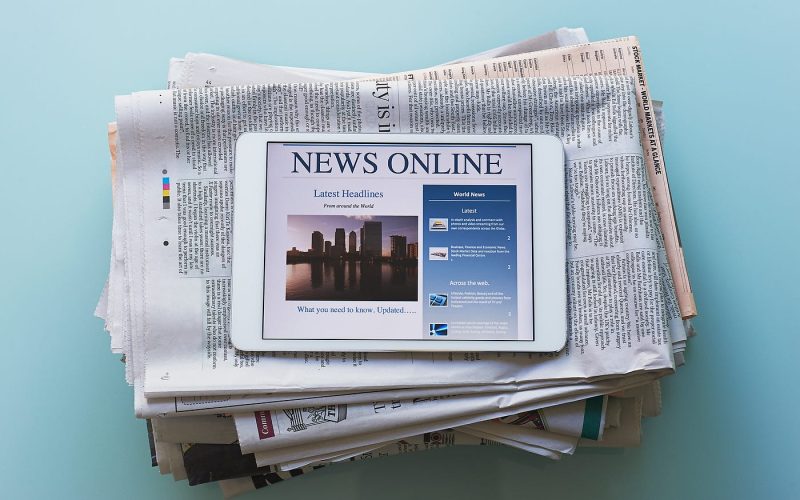Introduction
In the last two decades, digital platforms have revolutionized the way we consume news. The advent of the internet and the proliferation of smartphones have transformed news consumption from a predominantly print-based activity to a digital one. This shift has brought about significant changes in the news industry, influencing everything from the speed at which news is disseminated to the ways in which it is consumed and interacted with by audiences. This article explores the multifaceted impact of digital platforms on news consumption, examining the benefits, challenges, and future trends.
The Evolution of News Consumption

-
Traditional News Media
Historically, news was consumed through print newspapers, radio, and television. These traditional forms of media had established routines and schedules, with newspapers being delivered daily, radio news broadcasts airing at specific times, and television news programs being scheduled at regular intervals. This created a predictable rhythm for news consumption.
-
The Rise of the Internet
The internet began to disrupt this established order in the late 20th century. With the development of online news websites, news became available 24/7, breaking free from the constraints of scheduled broadcasts and print deadlines. This marked the beginning of a new era in news consumption, characterized by immediacy and accessibility.
-
The Proliferation of Digital Platforms
The advent of digital platforms such as social media, news apps, and content aggregators has further transformed news consumption. Platforms like Facebook, Twitter, and Google News have become primary sources of news for many people, offering personalized news feeds and real-time updates. These platforms have not only changed how news is delivered but also how it is consumed and interacted with.
Benefits of Digital Platforms in News Consumption

-
Accessibility and Convenience
One of the most significant benefits of digital platforms is the accessibility and convenience they offer. News is now available at our fingertips, accessible from anywhere and at any time. This has democratized access to information, allowing people from all walks of life to stay informed about current events.
-
Real-Time Updates
Digital platforms provide real-time updates, ensuring that news is disseminated almost instantaneously. This is particularly valuable in situations where timely information is crucial, such as during natural disasters, political events, or public health emergencies.
-
Personalization
Many digital platforms use algorithms to personalize news feeds based on users’ interests and preferences. This ensures that users are more likely to see news stories that are relevant to them, enhancing their engagement with the content.
-
Interactivity and Engagement
Digital platforms facilitate greater interactivity and engagement with news content. Users can comment on articles, share stories on social media, and participate in discussions. This creates a more dynamic and participatory news consumption experience.
Challenges Posed by Digital Platforms

-
Misinformation and Fake News
One of the most significant challenges posed by digital platforms is the spread of misinformation and fake news. The speed at which information is disseminated online, combined with the lack of rigorous fact-checking, can lead to the rapid spread of false information.
-
Filter Bubbles and Echo Chambers
The personalization algorithms used by digital platforms can create filter bubbles and echo chambers, where users are only exposed to news that aligns with their existing beliefs and opinions. This can reinforce biases and limit exposure to diverse perspectives.
-
Decline of Traditional News Outlets
The rise of digital platforms has led to a decline in traditional news outlets, particularly print newspapers. Many newspapers have struggled to adapt to the digital age, leading to closures and job losses in the industry. This has raised concerns about the sustainability of quality journalism.
-
Privacy Concerns
The use of data to personalize news feeds raises privacy concerns. Users’ browsing habits, preferences, and personal information are often collected and used to tailor content, raising questions about data security and user consent.
The Future of News Consumption

-
Integration of Artificial Intelligence
Artificial intelligence (AI) is expected to play an increasingly significant role in news consumption. AI can be used to curate news feeds, detect fake news, and even generate news content. This has the potential to enhance the efficiency and accuracy of news dissemination.
-
Rise of Subscription Models
As traditional advertising revenues decline, many news organizations are turning to subscription models to sustain their operations. This trend is likely to continue, with more news outlets offering premium content behind paywalls.
-
Enhanced Multimedia Content
The future of news consumption is likely to see a greater emphasis on multimedia content. Videos, podcasts, interactive graphics, and virtual reality experiences are becoming increasingly popular ways to consume news.
-
Greater Emphasis on Local News
There is a growing recognition of the importance of local news. Digital platforms are likely to place greater emphasis on local news content, catering to the specific needs and interests of local communities.
Conclusion
Digital platforms have undeniably transformed the way we consume news, offering numerous benefits such as accessibility, real-time updates, personalization, and interactivity. However, they also pose significant challenges, including the spread of misinformation, the creation of filter bubbles, the decline of traditional news outlets, and privacy concerns. As we look to the future, it is essential to address these challenges while harnessing the potential of digital platforms to enhance the news consumption experience. By doing so, we can ensure that the public remains well-informed in an ever-evolving digital landscape.










